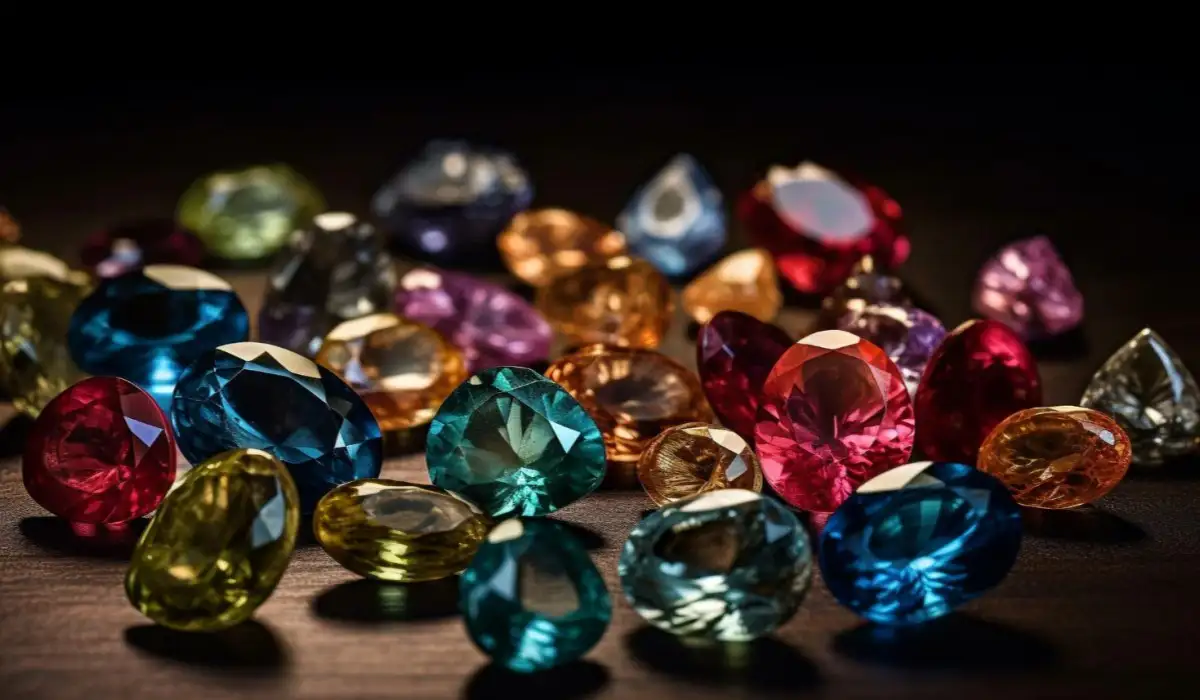National Jewel Day, which takes place on March 13th, is a celebration dedicated to the awe and admiration of sparkling gemstones, precious metals, and exquisitely designed jewelry. This day offers a platform for all to immerse themselves in the captivating beauty of jewels, their shining allure, and their transformative power on outfits, moods, or even entire events.
Regardless of whether you are a jewelry collector, an aspiring jewelry designer, or simply someone who takes pleasure in wearing and giving jewels as gifts, National Jewel Day encourages everyone to cherish these beautiful and valuable adornments.
History of National Jewel Day
Jewelry has been a part of human culture since prehistoric times, often used for decoration, religious rituals, and status symbols. Its history stretches back many thousands of years, with the oldest known jewelry being 100,000 year-old beads made from Nassarius shells.
By around 3000 BC, Ancient Egyptians were crafting jewelry from gold, silver and precious gemstones. Necklaces, bracelets, anklets, armlets, and earrings were commonly worn by both men and women. Their jewelry often held symbolic and religious meanings.
In Ancient Greece, amethyst was worn as a protective charm against drunkenness. Greeks also started the trend of wearing jewelry for personal adornment. The Romans, on the other hand, used jewelry to show political status.
The Middle Ages saw the use of jewelry as a sign of social status and wealth. The Renaissance period brought about a revival of classical themes in jewelry and was marked by elaborate designs and the use of pearls and gemstones.
The modern era has seen a broadening of what defines jewelry. Various movements like Art Nouveau, Art Deco, and the Craftsman movement have influenced designs. The 20th century also marked significant advances in gem-cutting and jewelry-making technologies, with synthetic gemstones being created.
Present-day jewelry spans numerous styles, materials and uses. It serves as adornment, holds sentimental value, or signifies an important rite like engagement or marriage. Gold, silver, and precious gemstones continue to be valued, but there’s a demand for costume jewelry and sustainable, ethically sourced jewelry as well.
National Jewel Day Timeline
Usage of Beads in Jewelry
The oldest known form of jewelry are 100,000 year-old beads made from Nassarius sea snail shells.
Gold Jewelry
Gold becomes a popular material for jewelry in ancient Egypt.
Diamond Mining
Historians believe diamond mining began around this period in India.
Symbolism in Jewelry
During the Middle Ages, jewelry was widely used to symbolize religious, political, and social status.
Diamond Cutting
The technique of diamond cutting emerged in Europe allowing diamonds to be more precisely shaped for use in jewelry.
Mass Production of Jewelry
The Industrial Revolution led to the mass production of jewelry, improving accessibility for the wider population.
Ethical and Sustainable Jewelry
In response to growing environmental and social awareness, ethical and sustainable jewelry has gained popularity.
Ideas to Celebrate National Jewel Day
Jewelry Making Workshop
Host a fun-filled jewelry making workshop at your home or local community center. Provide all the necessary tools and materials, and teach participants how to make simple rings, bracelets, and necklaces.
Visit a Jewelry Museum
Celebrate the day by appreciating the art of jewelry making. Plan a day trip to a jewelry museum and enjoy the exquisite designs from different eras and cultures.
Jewelry Inspired Artwork
Create an art piece inspired by your favorite jewelry. This can be a painting, sculpture, or even a collage.
Throw a Jewel-Themed Party
To celebrate National Jewel Day in style, throw a jewel-themed party. Ask attendees to wear their best gems, and serve jewel-like foods and drinks such as sugar-coated pastries, candies, or jello in gem shapes.
8 Interesting Facts About Jewels
Most Expensive Jewel
The Hope Diamond is known as the most expensive jewel. The 45.42 carats Hope Diamond was purchased by Harry Winston, who donated it to the Smithsonian Institute. Its estimated value is $250 million
Pearl Creation
Unlike other gemstones, pearls are produced by a living organism – an oyster – as a defence mechanism against a potentially threatening irritant such as a bacteria.
Royal Blue
The Hope Diamond, once owned by Louis XIV and famously known for its curse, is what gives 'royal blue' its name.
First Synthetic Gemstone
Geneva Rubies were the first gemstones to be made synthetically, in 1885 in Geneva, Switzerland.. They're chemically identical to natural rubies but cost a fraction of the price.
World's Largest Cut Diamond
The world's largest cut diamond is the Golden Jubilee Diamond, weighing approximately 545.65 carats. It surpasses even the infamous Cullinan I, also known as the Great Star of Africa, in size.
Gemstone from Meteorites
Peridot is the only gemstone known to be found in meteorites.
Light Reflecting Quality
Diamonds' light reflecting quality is due to the total internal reflection of a light ray inside the stone. It is because of this that diamonds have a unique luster, called adamantine.
Emerald Symbolism
In ancient Rome, emeralds were known as the gemstone of Venus, the goddess of love and beauty, symbolizing eternal spring and hope.
National Jewel Day FAQs
Next National Jewel Day Dates
| Year | Date | Day |
|---|---|---|
| 2023 | March 13th | Monday |
| 2024 | March 13th | Wednesday |
| 2025 | March 13th | Thursday |
| 2026 | March 13th | Friday |
| 2027 | March 13th | Saturday |
| What is the pattern? | Every March 13th | |
National Jewel Day Word Search
- Diamond
- Gemstone
- Necklace
- Jewelry
- Emerald
- Pearl
